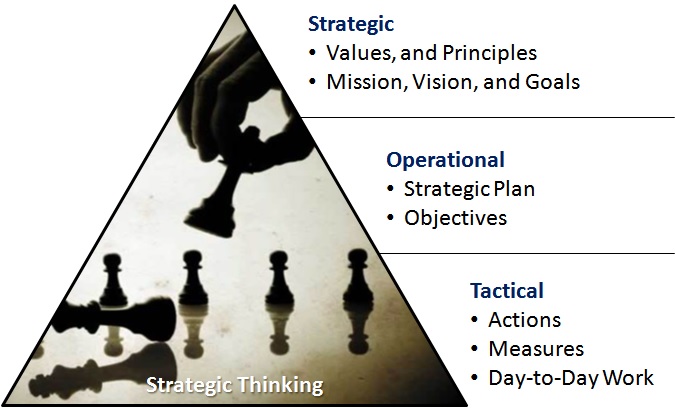 Leadership is a dying art in the world today. The great leaders of the past are found few-and-far between these days. There are some that have been fairly successful leaders that have rose to an iconic status, but have they been truly great leaders or just really successful at running something?
Leadership is a dying art in the world today. The great leaders of the past are found few-and-far between these days. There are some that have been fairly successful leaders that have rose to an iconic status, but have they been truly great leaders or just really successful at running something?
Often there is contention between the skills that a leader needs and what a manager needs. I believe, if you’re not a good leader, you won’t be a good manager, and if you’re not a good manager, you won’t be a good leader. It is my contention that those who apply both of these talents expertly demonstrate what I call, “LeadermentSM.” This is the expert combination of Leadership and Management together.
Leaders Think Strategically All the Time.
Great leaders don’t hold strategic planning sessions once a year; great leaders think strategically all the time. They still hold strategic planning sessions annually and more than not, once a quarter. Because great leaders know that their leadership team doesn’t always think strategically and they have to set aside time for them to think as the leader does. But the leader–a true leader–is always mentally in the strategy realm.
This doesn’t mean that they are out-of-touch with reality. If you understand strategy, then you then know it’s more than just visions and big ideas…it’s tactics and actions that make these things happen.
I don’t care who you talk to, everyone has a different definition of strategy. It becomes even more difficult when you through in terms like strategic plan, strategic planning, strategic mindset, strategic, thinking, etc.
I’m sure I’ll get a lot of comments from “strategy experts” on this, but for this blog, thinking strategically, means you think always about your Mission Vision, Values, Goals, Objectives, and Action Plans–your thinking takes the form of a strategic plan. To Develop the Leader Within, you must learn how to think like a leader–this is a skill all managers and leaders should develop.
“Stuff” happens at the Tactical-level with whatever you do. This is where the day-to-day activities take place. We “live” here mentally all the time. That’s because it’s what’s front of our nose’s day-in and day-out. It is very hard for managers and leaders to step out of this tactical-level because they feel that if they take the time to focus elsewhere, they will lose focus on the operation and things will fail. This is human nature.
Normally, managers and leaders are promoted to the their position because they showed skill at the Tactical-level as an employee. This sent a message to their leadership that they might be good managers and leaders. This doesn’t always prove to be true, but mainly this is because the newly promoted person can’t get their mind out of the tactical-level. Normally, they are too worried that mistakes will happen and the mission will fail, so they stay overly focused on the day-to-day. This often leads to micro-management of the people and frustrates everyone.
Focusing on the Tactical-level is a failure of effective LeadermentSM.
Above the Tactical-level is the Operational-level. Here, long-range objectives become your daily bread. Almost everything in the Operational-level falls into the form of projects and programs. For definition sake, projects are duration-based activities–in other words they have a beginning and an end. Programs run for a long time–they may end at some point, but they last a long while. Many employees initially have trouble transitioning from the Tactical to Operational levels because they still think day-to-day. Non-exempt employees are used to being hourly and when they move to exempt status and find themselves in the Operational-level, they often have trouble reacting.
Formerly non-exempt employees tend to move in one of two directions, which defines their behaviors for the future.
- They treat everything as a day-to-day task. Thus, they can’t think in long-term projects and programs. They feel overwhelmed because they feel that they can never get their work done. This is frustrating to them and their managers because often they are shying away from long-term necessary work and focusing on things they can get done during the day. They look at their day as a eight-hour schedule and see what they can accomplish in that time frame.
- They become workaholics that put in excessively long hours to try to get long-term tasks done quickly. Their focus is to get everything on their plate off their plate as quickly as possible. Thus they stay late to work on a project and push things through. They’re often not extremely collaborative on their projects, because others don’t move at their pace. Their management tends to reward these “high performers,” but the employee burns out and eventually gets frustrated because no matter how hard they work, the work never seems to get done.
Neither of these behaviors at the Operational-level are desirable. Focusing on the Operational-level is a failure of effective LeadermentSM.
Then we have those that literally live in Strategy Land. They’re constantly dreaming up things to do, directions to head, and brand new ideas. They’re the big thinkers and the dreamers and we’ve all worked with and for them. Life is easy for them, because they never get their hands dirty. They’re the ones pushing new projects and programs to the Operational-level that fit the purpose of the day and move with the winds of change. Managers and employees who exist and operate at the Tactical-level never know what direction the organization is heading, so they burrow in and simply focus on the job.
Leaders that live in the Land of Strategy find themselves very frustrated that all their grand ideas never seem to get accomplished, especially in the time frames they envisioned them occurring. They become more-and-more impatient and they tend to push their employees beyond their limits. They stress the entire organization and frustrate even the hardest and most dedicated workers.
Focusing on the Strategic-level is a failure of effective LeadermentSM.
So, if thinking strategic, operational, or tactical is a failure of effective LeadermentSM, how should a Leader think?
Leaders Think Strategically all the time…
This doesn’t mean they live in Strategy Land…this means they think all the time like their strategic plan. Refer to the image below:
All Leaders and Managers, regardless of what level they work at, should apply Strategic Thinking every day. When you think strategically, everything you do starts to change. This means that you are always considering all three levels every day and with every decision.
Strategic Thinkers ground themselves in the values, principles, mission, and vision of the organization–regardless if they came up with them or not. They are constantly evaluating every decision to ensure it fits within the values and principles, is it part of the mission of what they should be doing, and does it move the organization toward the vision.
Strategic Thinkers understand that nothing–I repeat NOTHING–happens at the Strategic-level outside of creating direction. Things do not get done at the Strategic-level and if they think they will, they’re simply fooling themselves. If you are waiting for something “strategic” to happen, then you’re going to wait a long time. Things happen at the Tactical-level.
Strategic Thinkers ensure that their programs are aligned to the strategy of the organization. Programs are long-term and very lasting, thus they should be 100% aligned with the mission. Programs do not support the vision–I know that may surprise you, but they don’t. Strategic Objectives, which are aligned to Strategic Goals, take the form of Projects. Operational Projects, which are temporary in nature, should be primarily designed to evolve Operational Programs to move the organization toward its vision.
Projects are not always 100% aligned to the mission and vision of the organization, but for the most part they should be. Occasionally, you might have to do something that simply doesn’t move the strategic needle.
Strategic Thinkers know that this means that Programs are mission-focused and Projects are vision-focused. Thus, Strategic Thinkers don’t live in Strategy Land pushing down new idea after new idea. They ensure the programs running in the organization support the mission 100%. They also ensure organizational Projects are designed to move the organization’s Programs toward the vision. If something isn’t supporting the strategic plan of the organization, it must be questioned.
At the Tactical-level, Strategic Thinkers know this is where the real work gets done. However, there are two types of tactical work–Program and Project. Understanding this helps those who operate at the Tactical-level connect to the mission. Also, understanding this helps those that operate at the Operational-level better focus on how their day-to-day actions affect the bigger picture and thus relieves a lot of stress and frustration.
Additionally, Strategic Thinkers understand that the act of strategic planning is a tactical activity that should operate within an operational program–in other words, organizational strategic thinking is a strategic program that should always exist. The problem is that it seldom does.
If you work at the day-to-day Tactical-level, your actions exist within a Program and sometimes they support a Project designed to evolve a Program. Just thinking this way fully aligns what you do every day to the strategy. If what you’re doing every day doesn’t support this, ask yourself why.
If your mind exists in one level–strategic, operational, or tactical–then you will fail to achieve effective LeadermentSM. No matter where you operate, you must always think strategically–think like a leader. Following this guidance will build your competence in the LeadermentSM YouniversitySM and prepare you for greater challenges.
When you think of great leaders think about what styles and concepts of LeadermentSM they employed. What did they do that was so effective…that propelled the masses under them to great things. As we can see, these styles vary in application, but an effective leader and manager should understand and apply all traits in a combined approach as appropriate.
LeadermentSM and YouniversitySM are service marks of Crosscutter Enterprises



 Leadership is a dying art in the world today. The great leaders of the past, George Washington, Winston Churchill, Alexander the Great, Martin Luther King, even Adolph Hitler, are found few-and-far between these days. There are some that have been fairly successful, like Steve Jobs for instance, that have rose to an iconic status, but have they been truly great leaders or just really successful at running something?
Leadership is a dying art in the world today. The great leaders of the past, George Washington, Winston Churchill, Alexander the Great, Martin Luther King, even Adolph Hitler, are found few-and-far between these days. There are some that have been fairly successful, like Steve Jobs for instance, that have rose to an iconic status, but have they been truly great leaders or just really successful at running something? Start with a Strategic Mindset.
Start with a Strategic Mindset. Harness the Power of Positive Thinking.
Harness the Power of Positive Thinking. Establishing Key Interpersonal Skills.
Establishing Key Interpersonal Skills. Developing a Personal Business Focus.
Developing a Personal Business Focus. Your Health and the Leader Within You.
Your Health and the Leader Within You. Volunteerism — The Personal Training Ground for Personal Development.
Volunteerism — The Personal Training Ground for Personal Development.